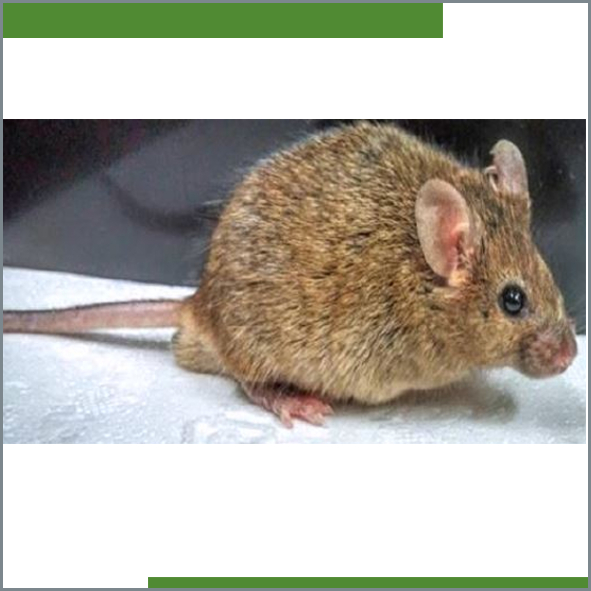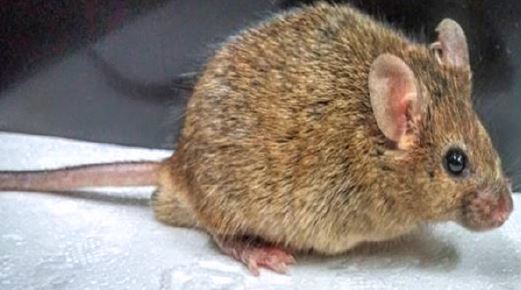Establishment and maintenance of an R6/1 transgenic mouse colony and validation of its progressive neurological phenotype to study Huntington’s disease
Main Article Content
Abstract
Veterinaria México OA
ISSN: 2448-6760
Cite this as:
- García-Lara L, Morales-Martínez A, Angeles-López QD, Pedraza-Espitia H, Pérez-Neri I, Rodríguez-Balderas CA, Pérez-Severiano F. Establishment and maintenance of an R6/1 transgenic mouse colony and validation of its progressive neurological phenotype to study Huntington’s disease. Veterinaria México OA. 2018;5(1). doi: 10.21753/vmoa.5.1.487.
Huntington’s disease (HD) is a hereditary neurodegenerative disorder of the central nervous system that mainly affects the basal ganglia and has no cure. The mutation is located at an abnormal expansion of the CAG triplet in the Huntingtin gene. Humans show psychiatric, behavioural and motor disorders. Transgenic animal models are essential to the study of HD since the disease only affects humans. Therefore, the aim of this article was to describe the formation and maintenance of and to validate the progressive neurological phenotype of an R6/1 transgenic mouse colony. To achieve our objective, the colony founder was imported from Jackson Laboratories, and the mice were kept under controlled environmental conditions. The animals were bred at the vivarium of the Instituto Nacional de Neurología y Neurocirugía Manuel Velasco Suárez. The R6/1 transgenic mice were successfully bred and showed genetic and phenotypic characteristics similar to the ones previously reported. Our colony is currently established and validated with the conditions of our vivarium and has produced more than four generations of R6/1 mice. The establishment of the R6/1 colony and its maintenance through generation is an advantage since it allows us to follow the authenticity of the transgenic mice regarding their phenotypic and motor behaviours. Furthermore, these animals can be compared with other transgenic mice that reproduce some of the main characteristics of the disease manifested in humans, making these transgenic R6/1 mice a useful tool for the study of HD.
Article Details
References
Pringsheim T, Wiltshire K, Day L, Dykeman J, Steeves T, Jette N. The incidence and prevalence of Huntington’s disease: a systematic review and meta-analysis. Mov Disord. 2012;27:1083-91. doi: 10.1002/mds.25075.
Gusella JF, Wexler NS, Conneally PM, Naylor SL, Anderson MA, Tanzi RE, et al. A polymorphic DNA marker genetically linked to Huntington’s disease. Nat Genet. 1983;306:234-8. doi: 10.1038/306234a0.
MacDonald ME, Ambrose CM, Duyao MP, Myers RH, Srinidhi CLL, Barnes G, et al. A novel gene containing a trinucleotide repeat that is expanded and unstable on Huntington’s disease chromosomes. Cell. 1993;72:971-83. doi: /10.1016/0092-8674(93)90585-E.
Andrew SE, Goldberg YP, Kremer B, Telenius H, Theilmann J, Adam S, et al. The relationship between trinucleotide (CAG) repeat length and clinical features of Huntington’s disease. Nat Genet. 1993;4:398-403. doi: /10.1038/ ng0893-398.
Estrada Sánchez AM, Mejia-Toiber J, Massieu L. Excitotoxic neuronal death and the pathogenesis of Huntington’s disease. Arch Med Res. 2008;39:265-76. doi: 10.1016/j.arcmed.2007.11.011.
von Hörsten S, Schmitt I, Nguyen HP, Holzmann C, Schmidt T, Walther T, et al. Transgenic rat model of Huntington’s disease. Human molecular genetics. Hum Mol Genet. 2003;12:617-24. doi: 10.1093/hmg/ddg075.
Uchida M, Shimatsu Y, Onoe K, Matsuyama N, Niki R, Ikeda JE, et al. Production of transgenic miniature pigs by pronuclear microinjection. Transgenic Res. 2001;10:577-82.
Yang SH, Cheng PH, Banta H, Piotrowska-Nitsche K, Yang JJ, Cheng EC, et al. Towards a transgenic model of Huntington’s disease in a non-human primate. Nature. 2008;453(7197):921-4. doi: 10.1038/nature06975.
Jacobsen JC, Bawden CS, Rudiger SR, McLaughlan CJ, Reid SJ, Waldvogel HJ, et al. An ovine transgenic Huntington’s disease model. Hum
Mangiarini L, Sathasivam K, Seller M, Cozens B, Harper A, Hetherington C, et al. Exon 1 of the HD gene with an expanded CAG repeat is sufficient to cause a progressive neurological phenotype in transgenic mice. Cell 1996;87:493-506. doi: 10.1016/S0092-8674(00)81369-0.
Beal MF, Ferrante RJ. Experimental therapeutics in transgenic mouse models of Huntington’s disease. Nat Rev Neurosci. 2004;5:373-84. doi: /10.1038/ nrn1386.
Pouladi MA, Morton AJ, Hayden MR. Choosing an animal model for the study of Huntington’s disease. Nat Rev Neurosci. 2013;14. doi: 10.1038/nrn3570.
Ferrante RJ. Mouse models of Huntington’s disease and methodological considerations for therapeutic trials. Biochim Biophys Acta. 2009;1792:506-20. doi: 10.1016/j.bbadis.2009.04.001.
Chang R, Liu X, Li S, Li XJ. Transgenic animal models for study of the pathogenesis of Huntington’s disease and therapy. Drug Des Devel Ther. 2015;9:2179- 88. doi: /10.2147/DDDT.S58470.
Zheng Z, Diamond MI. Huntington disease and the huntingtin protein. Prog Mol Biol Transl Sci. 2012;107:189-214. doi: 10.1016/B978-0-12-385883-2.00010-2.
Andreassen OA, Dedeoglu A, Stanojevic V, Hughes DB, Browne SE, Leech CA, et al. Huntington’s disease of the endocrine pancreas: insulin deficiency and diabetes mellitus due to impaired insulin gene expression. Neurobiol Dis. 2002;11:410-24. doi: /10.1006/nbdi.2002.0562.
Perez-Severiano F, Rios C, Segovia J. Striatal oxidative damage parallels the expression of a neurological phenotype in mice transgenic for the mutation of Huntington’s disease. Brain research. 2000;862(1-2):234-7. doi: 10.1016/ S0006-8993(00)02082-5.
License

Veterinaria México OA by Facultad de Medicina Veterinaria y Zootecnia - Universidad Nacional Autónoma de México is licensed under a Creative Commons Attribution 4.0 International Licence.
Based on a work at http://www.revistas.unam.mx
- All articles in Veterinaria México OA re published under the Creative Commons Attribution 4.0 Unported (CC-BY 4.0). With this license, authors retain copyright but allow any user to share, copy, distribute, transmit, adapt and make commercial use of the work, without needing to provide additional permission as long as appropriate attribution is made to the original author or source.
- By using this license, all Veterinaria México OAarticles meet or exceed all funder and institutional requirements for being considered Open Access.
- Authors cannot use copyrighted material within their article unless that material has also been made available under a similarly liberal license.




